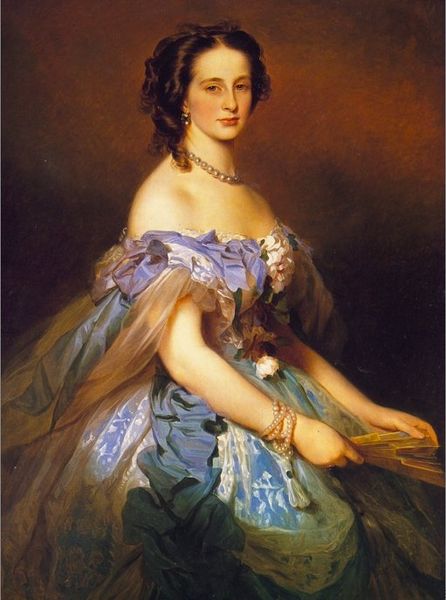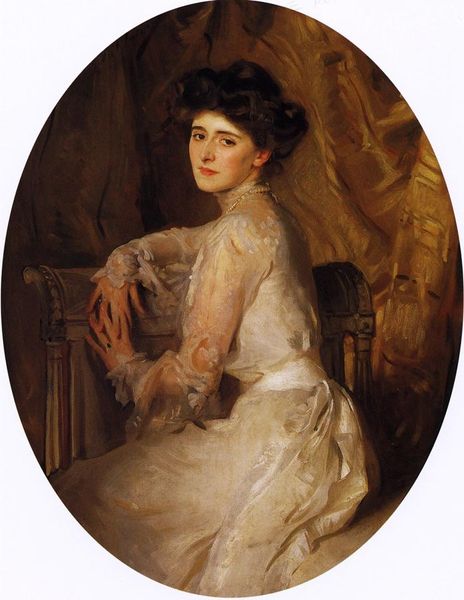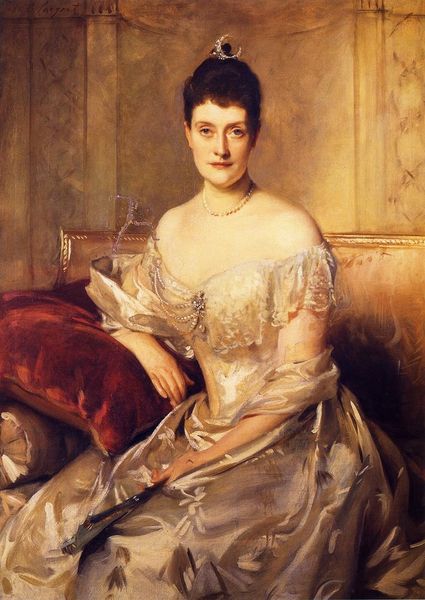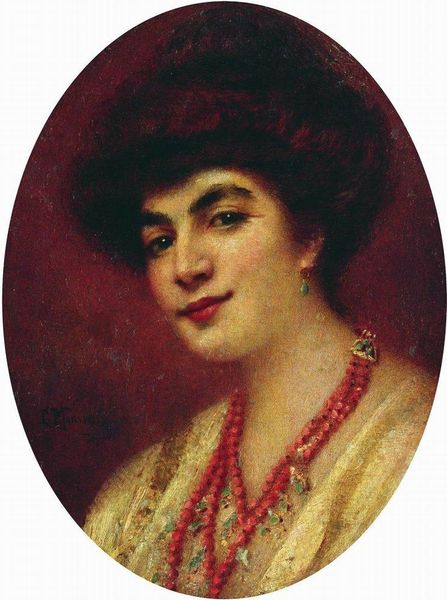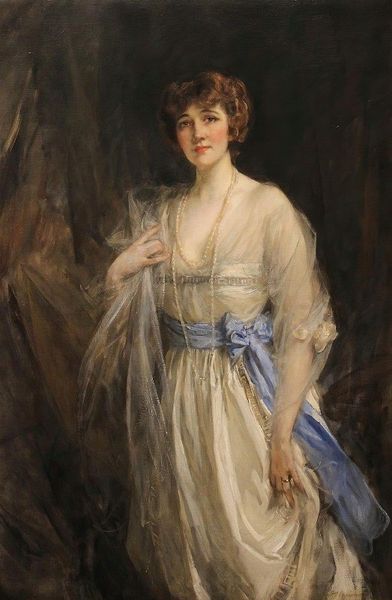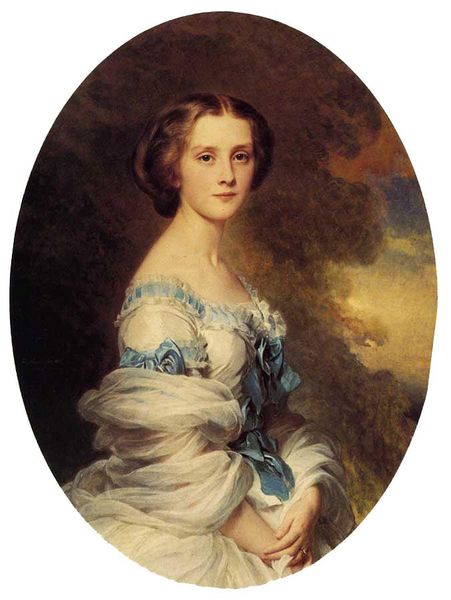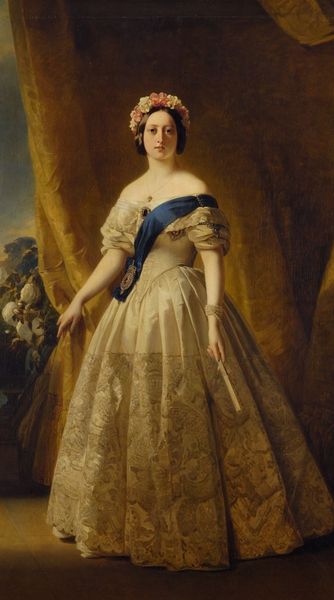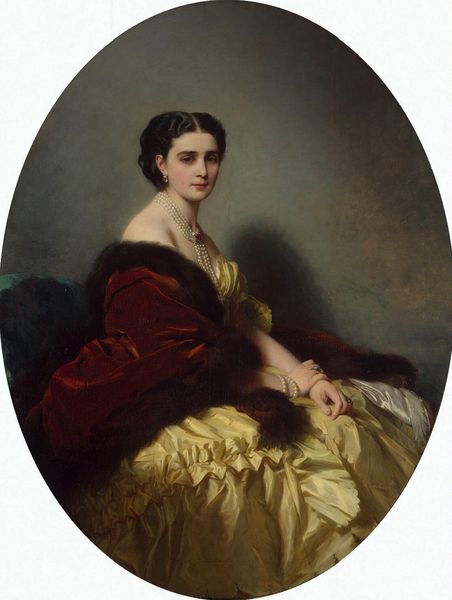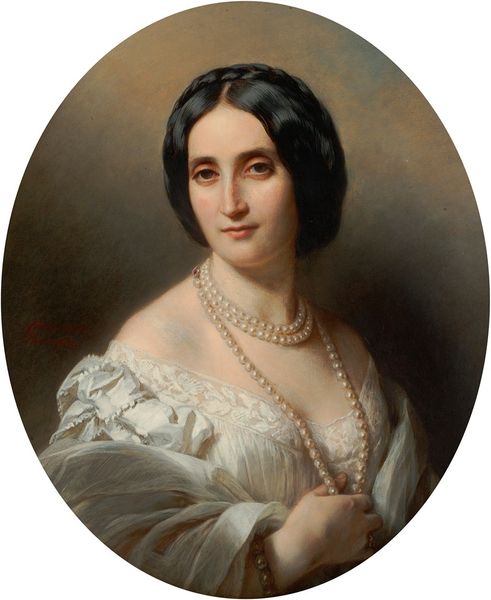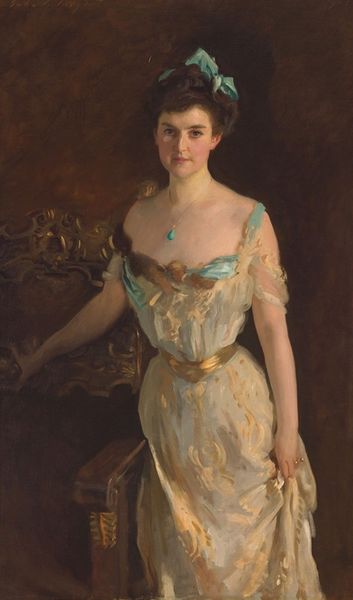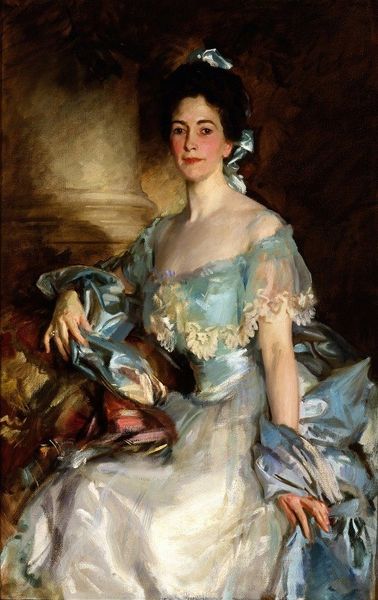
Copyright: Public domain
Curator: Let’s turn our attention to this portrait from 1925. This is Philip Alexius de László's depiction of *The Duchess of York*. Editor: What a captivating image! Her gaze feels so direct, yet there's a touch of melancholy in her eyes. The soft blues and browns create such a gentle, almost dreamlike atmosphere. Curator: Absolutely. De László was working during a period of significant social and political change. The Roaring Twenties were unfolding and traditional hierarchies were being questioned, including the expected role of women in royal life. This portrait has been contextualized within the ongoing feminist theories that dissect the traditional portraiture of women within historical narratives. Editor: You know, looking at it now, the softness feels deliberate, almost as if shielding her from the harshness of that new reality. It's like she's both present and a little removed, which for someone in her position... makes you wonder. Do you think it mirrors her personal struggles and negotiations of power within this transition era? Curator: Indeed. Consider also how de László uses color. He creates a softness in her skin tone to depict vulnerability while showcasing dignity by including pearl necklaces to indicate class and status. The artwork functions within broader historical interpretations, which encourage dialogue on power dynamics and class identity within artwork as well. Editor: It’s funny; those pearls could just as easily feel like gilded chains, don’t you think? A beautiful cage. Curator: Precisely. That tension between adornment and constraint makes it really resonate, even today. Her delicate pose might portray her feminine, but you have to consider the politics of female portraiture in art history to contextualize its purpose in this setting. Editor: I think you've hit the nail on the head there. What strikes me the most, really, is that subtle duality -strength wrapped in this gorgeous softness. Curator: Reflecting on this, the image gives an intimate view, though clearly carefully managed. It pushes me to consider the tension between identity, performance, and the weight of lineage when reading an image from our contemporary perspectives. Editor: Agreed! I can't shake how powerfully personal and political it is, making us think deeply about gender roles back then and now. The painting holds more than just a woman's face—it has become an important artifact and emblem of its era.
Comments
No comments
Be the first to comment and join the conversation on the ultimate creative platform.
